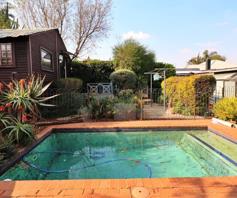 Combine this with an ever-shrinking stock of fossil fuels and it is clear that we are obliged to take a more pro-active stance with regards to energy usage. Winter is the best time to incorporate environmentally (and pocket friendly) heating measures.
Combine this with an ever-shrinking stock of fossil fuels and it is clear that we are obliged to take a more pro-active stance with regards to energy usage. Winter is the best time to incorporate environmentally (and pocket friendly) heating measures.As the country buckles under a major power crunch this winter, the newly-established National Energy Efficiency Agency (NEEA), a division of CEF (Pty) Ltd, is to embark on a critical national campaign to persuade South Africans to change their energy consuming behaviour. Berry Floor provides some interesting insights about just how underlaminate heating contributes towards energy saving.
Fringe benefits
Enter underfloor heating. The benefits of underfloor heating are tenfold. In addition to being both an economically and environmentally friendly alternative to conventional heating methods, underfloor heating is also a healthier heating option in that it doesn't emit dry air, which aggravates symptoms such as asthma and various similar maladies. Underfloor heating is also discreet and effective.
Best of the best
If you want to install laminated flooring and underfloor heating, the WarmUp system offers pioneering underlaminate heating technology which ensures the perfect temperature in any home.
WarmUp is the first floor heating manufacturer to develop and produce unique foil based, underlaminate heating pads which make for hassle and mess free installation.
Two types of heating options are available, namely the Warmup 'Undertile Cable' system or the even more economical 'Underlaminate Pad' system. All WarmUp heaters are safety tested and waterproof. Moreover, all heaters are enclosed in an 'earth shield foil' which eliminates any risk of electrical shock.
Set and forget thermostat
Given SA's current electrical crisis, Berry Floor recommends purchasing the Microtemp Programmable Floor Sensor Thermostat for those who wish to install underlaminate heating. Distributed by WarmUp, the programmable thermostat is an optional extra offered in conjunction with underlaminate heating installations. This clever gadget saves electricity (and ultimately the environment) through monitoring heat levels in a room.
Homeowners can programme the device in advance to meet their floor heating requirements. This means the system is switched off when not required. According to WarmUp, the system saves in excess of 5% on your electricity bill.
The Microtemp Floor Sensor thermostat carries Underwriters Laboratory Approval (the Denmark equivalent of an SABS stamp) as well as a one-year guarantee. All Berry Floors can be used in conjunction with the system.
Do the math
Electricity is sold by the kilowatt per hour. The present rate for a domestic user is 39 cents per kilowatt, inclusive of VAT, although this may vary depending on the municipal area.
Therefore, to calculate the hourly running cost of an appliance, divide its kilowatt rating by 1000 and multiply by 39. For example: Heating model ULS 300 = 300 watts divided by 1 000 = 0.30 kW x 39c = 0.12 cents per hour to run. This model uses the equivalent power of three 100 watt light bulbs. In other words, good value for money.
Do's and don'ts
Berry Floor notes while enjoying underlaminate heating, the following should be adhered to:
• The laminate boards should never be exposed to heat exceeding 27°C. Therefore a floor probe, an essential part of installation, will monitor the heating pads and so turn the programmable thermostat off once this temperature has been reached.
• Covering the floor with rugs and the like should also be avoided as the floor temperature could be elevated to 50°C and cause the boards to 'shrink'.
• The laminate installation should also be fitted with a good quality underlay and damp proof membrane to prevent heat loss.
Save even more!
The need to save energy is becoming increasingly important. The fact is, earth is getting crispier with every passing year and although this may sound like good news to heat lovers, as scientists may euphemistically put it, it really, really isn't.
To this end, the National Energy Efficiency Agency or NEEA will begin to oversee the implementation of Demand Side Management and Energy Efficiency projects undertaken by Eskom and various similar entities.
One endeavor involves the use of energy efficient appliances and electronics. NEEA's aim? To have energy efficiency ratings labeled on all appliances. These labels will help the consumer to make an energy efficient and economically friendly choice. Other energy efficient tips to save money and help the environment from Berry Floor include keeping windows and doors closed to prevent the loss of warm air and dressing comfortably for the weather by adjusting your layers of clothing before adjusting the thermostat.
Readers' Comments
Just so the public are not led astray, there are two items in this article that I would "dispute"
The first is the statement that under floor heating does not "emit" dry air. No heating system "emits" dry air, or any other sort of air for that matter. The dryness (relative humidity) of the air is a dependant on the available moisture, the air pressure and temperature. It would have been more accurate to state that because under floor heating is a low temperature heating solution, the air may not get as dry as it would with high temperature heating such as gas, coal or conventional electric heaters.
The second, and by far the more serious, is the example of heating costs. It is well known that under floor heating is a heavy user of electricity. By providing an example of a 300W heating element only costing 0.12cents per hour to run is gross misrepresentation. The physics behind this is quite simple. If 300W were all that was required to heat your home, or to be fair, say one room, then the room lighting would in many cases suffice. This is clearly not the case. In practice, heating coils of the order of 1-2kW per 20 cubic meters of living space are required to provide adequate heating during our cold SA nights. Assuming that 100m2 of a residence requires heating, at an average 2.5m ceiling height, the resulting volume of 250m3 will require 12-24kW of heating. Now taking the lower figure, the cost per hour is 12x0.39 = R4.68 per hour. Assuming that the heater is operational 50% of every 24 hours (thermostatically controlled), the monthly cost is R4.68 x 24 x 0.5 x 30 = R1,684 per month. Speak to any owner of under floor heating, and this is the order of magnitude of electrical bill that they experience in winter.
With proper design however, matters can be improved by doing the following.
Provide a layer of insulation BELOW the screed containing the heating coils. This ensures that valuable electricity is not used to heat up the ground beneath the building.
Install roof insulation and keep external doors and windows closed as much as possible to reduce heat loss.
These measures could reduce the duty cycle to 25%-30%, giving a monthly saving of R600-R800 per month.
As an aside, an anthracite burning heater can produce 10-15kW. It does this continuously and can operate for 12 weeks (as long as the worst of our winters) for just under R1000 of anthracite. Compare this to the cost of around R3,000 for a well designed under floor heating system (which still produces less heat). - Russell Drake
The cost in the example cited [300W unit] is 12 cents/hour or R0.12/hr but not 0.12 c/hr. Therefore, to calculate the hourly running cost of an appliance, divide its kilowatt rating by 1000 and multiply by 39. For example: Heating model ULS 300 = 300 watts divided by 1 000 = 0.30 kW x 39c = 0.12 cents per hour to run. This model uses the equivalent power of three 100 watt light bulbs. In other words, good value for money. - Colin Govender, Pr. Eng
Have a comment or question about this article? Tell us about it..
Get up-to-date property news
Would you like to receive free weekly news and information about property in South Africa? Click here to sign up for Property24's Week in Review.
Property News
Click here for more property news articles or sign up now for our free news SMSs twice a day.
Need a blog?
Start your own blog with a free blog from 24.com.







